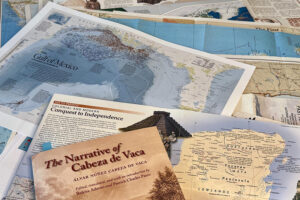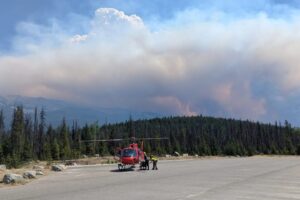Contact with white man often spelled tragedy for isolated native populations. Rape, pillage, murder, relocation, forced education, religion and much more.
In At the End of The World, travel writer and arctic wanderer Lawrence Millman brings us one such tragedy, a 70-year old tale of murder in a remote Inuit community in the Canadian Arctic, fueled by the insidious spread of what George Bernard Shaw calls “the most dangerous book on earth” –- the Bible.
Millman coaxed the bones (no pun intended) of this intriguing arctic tragedy, which took place on the Belcher Islands of Hudson Bay, from elders with long memories.

Photo: Lawrence Millman
Broadly, the story goes that after hearing about Jesus Christ from a friend, one Inuk declared shortly after a meteor shower lit up the night sky that he was, in fact, Jesus. Another man, the most revered hunter in the community, was soon declared to be God.
Thus ensued the killing -– by the newly anointed deities and their followers — of most of the communities’ sled dogs and the slaying of nine men, women and children. All in the name of God.
On visiting an Inuk grave and finding a skull boasting a wide grin, Millman wonders if the deceased had got out at just the right time, before white man’s religion arrived on the Belcher Islands with murderous consequences.
But this intriguing murder tale isn’t the sole focus of the book. Millman draws an analogy between white man’s (Qallunaat) interference on the Belcher Islands and the digital revolution, which now encroaches upon every corner of our lives, diminishing our connection with the natural world. We live in what Millman calls “Cyberia”.
“Siberia possesses other endless taiga or endless tundra. Cyberia has no landscape, only endless screens,” the self-professed neo-luddite proclaims.
For some, Millman’s disdain for computers, smartphones et al might rear its head a little too frequently. In fact, you might even wonder if Millman and not Ted Kaczynski (aka the Unabomber) penned the infamous essay on the Industrial Revolution.
But I enjoyed Millman’s amusing digs at us cyberians. After all, he has a point: “Several years ago, on a Boston street,” writes Millman “a woman gazing at her digital device walked directly into me. “‘Sorry,’ she apologized. ‘I was just trying to find out the weather.'”
The book is full of such pithy witticisms, many from the Inuit themselves. In fact, it’s written in a rather odd style: A hotchpotch of notes from his visits north, anecdotes of screen-obsessed cyberians, interwoven with the grim tale from Hudson Bay.
Yet Millman’s unorthodox style of punchy paragraphs and meandering between cyberia bashing, ethnographic travels and the murders in the Arctic actually make for an easy and enjoyable read.
Taken together, At The End of The World laments the decay of two very different worlds, both linked by intrusion of a religion of sorts. As one of Millman’s Inuk friends confesses in an email that he too is “screened-in”, an Inuktitut word aptly describes these changing times as simply Ajurnamaat (That’s the way it is). Nothing can be done.

At The End Of The World by Lawrence Millman was published in 2017 by St.Martin’s Press.






